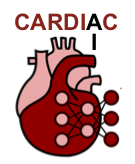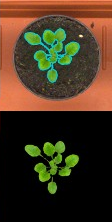Research
The population increase exerts tremendous pressure on our healthcare systems and agricultural needs. Imaging methodologies are increasingly used to aid diagnoses and to build image-driven physiological models in the natural and life sciences. However, the explosion of the amount of data cannot be met by the current approaches used to analyse the generated images/volumes/movies and unravel the complicated patterns that exist. Our mission, is to address these limitations by integrating the state of the art in computer vision, AI, and large language models. Our unique approach has the potential to provide efficient and affordable solutions towards sustainable healthcare systems and agriculture, of immense benefit and importance to society.
Overview
Challenge 1: Population increase puts pressure on our healthcare systems

Every day thousands of people are born in the under-developed world without access to basic healthcare, while at the same time in the developed world, the population is ageing with an increasing cost of access to good healthcare. We need new imaging and image analysis methods to help bring down the cost of diagnostics, help unravel the mysteries behind several killer diseases, and eventually predict onset of disease.
We work on several aspects of medical image analysis, but central to our approach is the problem of representation learning and trying to do more with less, by building algorithms that can leverage unsupervised data (semi-supervised learning), extract the relationship between different tasks (multi-task learning) and can integrate various sources of information (multi-modal learning).
This is epitomised in our vision that we should move from narrow AI to a “Big AI”, which lately has been popularised by foundation models.
More recently, we have embarked on work to create well-defined, robust, and fair prediction systems. This has led to considerable innovations in causal AI by our team, both in how we discover causal links between variables but also in how we jointly learn data representations within a causal prior. This extends considerable activity by our team in disentangled representation learning.
Our interests in health and medicine have recently span towards using AI to better design experiments, improve data collection, the guidance of biomechanical model simulations and even the design of better molecules. We are married into the idea that AI will radically change how we do science in the future.
Challenge 2: Sustainability and netzero

Remarkably we seem to worry so much about our well being and health, but we are forgetting that without access to food and water, we cannot survive. The rapidly increasing human population combined with the “threat” of global warming, necessitate that we increase food production, reduce our carbon footprint, decrease waste and chemical pollution, and discover alternative sources of energy and materials.
Plants have always been a crucial source of food, feed, fiber, and fuel and thus the agriculture industry reflects a large portion of economic output. Together with the breeding industry, researchers try to identify, improve, and breed key traits to satisfy the growing demands, increase resistance to parasites and diseases, reduce environmental impact (less water, less fertilizer), always striving for a more sustained agriculture.
Our group has consistently contributed with open data, open software and hardware frameworks (Phenotiki), and robust and innovative algorithms to the problem of estimating phenotypic traits from images. We have also been central to the development of digital research infrastructures that enable data sharing and data reuse. Even here we believe in the role of AI in enabling easier user-to-data cooperation, which can be leveraged to change how AI can help us do better science
Sustainable production of food links well with another recent interest of ours in the use of AI to better predict future energy and food needs. This links well with our activity in better prediction systems and our activity in causal AI.
Projects
- Royal Academy of Engineering (RCSRF1819\8\25)
04/19 - 03/24
Canon Medical / Royal Academy of Engineering Research Chair in Healthcare AI - EPSRC (EP/X017680/1)
02/23 - 01/24
From trivial representations to learning concepts in AI by exploiting unique data - EPSRC (EP/X033686/1)
09/23 - 08/27
Real-time Digital Twin Assisted Surgery - EPSRC (EP/Y005376/1)
05/23 - 04/25
Virtual Power Plant with Artificial Intelligence for Resilience and Decarbonisation (VPP-WARD) - Kidney Research (KS_RP_012_20221129)
08/23 - 07/25
Redefining hemodialysis with data-driven materials innovation: towards miniaturization and the wearable artificial kidney - BBSRC
02/23- 01/25
PhenomUK Research Infrastructure - National Institutes of Health (USA) (R01HL148788-03)
06/20 - 08/24
Accurate, Needle-Free, MRI-based Detection of Ischemic Heart Disease with Contrast Agents - EPSRC-Dstl (EP/S000631/1)
07/18 - 06/23
University Defense Research Collaboration [UDRC] 3: Signal Processing in the Information Age
Completed
- National Institutes of Health (USA) (R01HL136578)
06/17 - 06/22
An Accurate Non-Contrast-Enhanced Cardiac MRI Method for Imaging Chronic Myocardial Infarctions: Technical Developments to Rapid Clinical Validation - Innovate UK
01/19 - 12/21
Industrial Centre for Artificial Intelligence Research in Digital Diagnostics (iCAIRD) - MRC (MR/R025746/1)
09/18 - 08/22
PhenomUK - Crop Phenotyping: from Sensors to Knowledge [A technology touching life network] - BBSRC GCRF (BB/P023487/1)
05/17 - 10/19
Improving root system architecture for enhanced drought tolerance and nutrient use efficiency in semi-arid agriculture of chickpea - EPSRC First grant (EP/P022928/1)
09/17 - 01/19
CardiacA.I.: Machine learning for the analysis of multimodal cardiac MR images used in the diagnosis of coronary heart disease - BBSRC TRDF (BB/N02334X/1)
09/17 - 01/19
An affordable active photometric system for capturing real-time 3D responses to vegetation dense environments - National Institutes of Health (USA)
09/13 - 09/17
Reliable Evaluation of Coronary Artery Disease using Myocardial BOLD MRI with CO2 - Marie Curie International Reintegration Grant (EU-FP7)
09/11 - 09/15
PHIDIAS: Phenotyping with a High-throughput, Intelligent, Distributed, and Interactive Analysis System